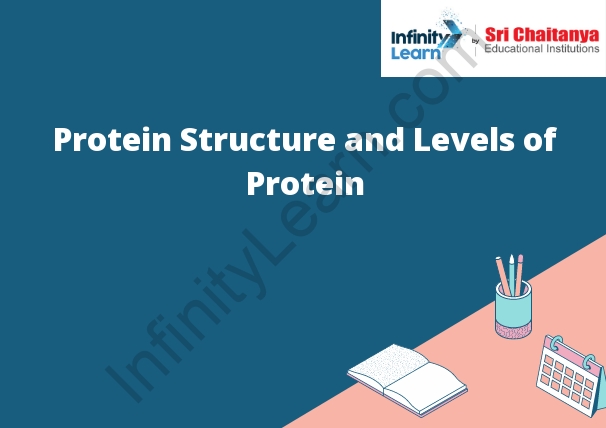Table of Contents
What is Protein Structure?
Protein Structure and Levels of Protein: Protein structure is the three-dimensional arrangement of the atoms in a protein molecule. Proteins are long, chain-like molecules made up of small molecules called amino acids. Therefore the amino acids are linked together in a specific order, and the protein’s structure is determined by the sequence of amino acids.

Protein Structure Definition
The three-dimensional structure of a protein is determined by the sequence of its amino acids. The sequence is determined by the gene that codes for the protein. The gene is a section of DNA that is transcribed into RNA and then translated into a protein sequence. The sequence of amino acids in a protein determines its tertiary structure. The tertiary structure is the three-dimensional shape of the protein. The tertiary structure is stabilized by secondary structures, such as alpha helices and beta sheets.
Primary Protein Structure
The primary protein structure is the linear sequence of amino acids in a protein. The sequence determined by the genetic code. The primary structure is responsible for the protein’s three-dimensional conformation and also its biological activity.
Secondary Protein Structure
The secondary protein structure is the folding of the protein chain into a specific, stable pattern. Therefore this pattern determined by the hydrogen bonding between the amino acids in the protein chain. The most common secondary structure is the alpha helix, in which the peptide chain forms a spiral. The beta sheet is another common secondary structure, in which the peptide chain forms a flat plane.
Tertiary Protein Structure
The tertiary protein structure is the final three-dimensional shape of a protein. This shape determined by the arrangement of the amino acids in the protein. The tertiary structure stabilized by hydrogen bonds, ionic bonds, and also disulfide bridges between the amino acids.
Quaternary Protein Structure
Quaternary protein structures formed by the interaction of four protein subunits. These proteins found in the cytoplasm and also nucleus of cells and play a role in organizing the cell’s structure. Examples of quaternary proteins include tubulin and also the actin, which involved in the cytoskeleton, and histones, which involved in DNA packaging.
Analysis of Protein Structure
The protein structure of lysozyme analyzed using the program Pymol. However the figure below shows the secondary structure of lysozyme.
The secondary structure of lysozyme made up of alpha helices and beta sheets. The alpha helices shown in red and the beta sheets shown in blue. The figure also shows the location of the disulfide bonds.
Proteins are essential to all living things. Therefore they are the building blocks of life, and they perform many important functions in the body. Proteins made up of smaller molecules called amino acids. There are 20 different types of amino acids that can combined to form proteins. The sequence of amino acids in a protein determines its structure and also the function.
Protein Structure
Proteins made in the ribosomes of cells. The sequence of amino acids determined by the sequence of codons in the gene that encodes the protein. A codon is a unit of genetic information that consists of three adjacent nucleotides. Therefore these are 64 possible codons, and each one corresponds to a different amino acid.
The sequence of amino acids in a protein determined by the sequence of codons in the gene that encodes the protein.
The sequence of codons in a gene determined by the sequence of nucleotides in the DNA molecule that encodes the gene. The DNA molecule made up of two strands of nucleotides that linked together by hydrogen bonds. The sequence of nucleotides in a DNA molecule determined by the sequence of nucleotides in the chromosomes. However the chromosomes made up of DNA molecules that organized into structures called chromosomes.
The sequence of nucleotides in a DNA molecule determined by the sequence of nucleotides in the chromosomes. Therefore the sequence of nucleotides in a chromosome determined by the sequence of nucleotides in the genome. The genome is the entire collection of DNA molecules in a cell








